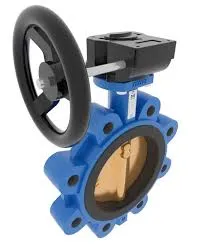Nov . 28, 2024 00:50 Back to list
Understanding Lift Check Valves and Their Applications in Fluid Systems
Understanding Lift Check Valves A Comprehensive Guide
In industrial applications, the integrity and efficiency of fluid systems are critical. One essential component that ensures appropriate fluid flow directions while preventing backflow is the lift check valve. In this article, we will delve into the working principle, design features, applications, advantages, and maintenance of lift check valves.
What is a Lift Check Valve?
A lift check valve is a type of check valve that allows fluid to flow in one direction only, while automatically preventing reverse flow. This mechanism is crucial in a variety of systems where backflow can cause damage, contamination, or inefficiencies. Unlike swing check valves, which use a swinging disc to control flow, lift check valves utilize a movable disc or plug that lifts off its seat when fluid flows in the forward direction.
Working Principle
The operational principle of a lift check valve is relatively straightforward. When the system is pressurized from the inlet side, the fluid moves the disc upward, allowing flow through the valve. This movement creates an opening that facilitates the passage of fluid. Conversely, when the flow ceases or reverses, the disc falls back onto its seat due to gravity and the weight of the disc, effectively sealing the valve and preventing backflow.
Design Features
Lift check valves typically consist of several key components, including
1. Body The main shell that holds all internal components and connects to the piping system. 2. Disc The movable part that lifts and seals. 3. Seat The area where the disc rests when closed. It creates a tight seal to prevent leaks. 4. Spring (optional) Some lift check valves incorporate a spring mechanism to help the disc return to its closed position more quickly. 5. Bonnet Protects and encases the internal components.
Lift check valves are available in various materials, including stainless steel, brass, and PVC, catering to different applications, pressures, and temperatures.
Applications
lift check valve

Lift check valves are extensively used in various industries, including
- Water Supply Systems To prevent backflow and contamination in municipal water systems. - Oil and Gas In pipeline systems to ensure unidirectional flow and protect equipment. - HVAC Systems To maintain consistent flow in heating and cooling systems. - Chemical Processing To safeguard processes by preventing the reverse flow of corrosive substances.
Their ability to maintain a one-way flow is fundamental in systems where any reverse flow could result in operational failures or safety hazards.
Advantages of Lift Check Valves
1. Reliable Performance The design inherently prevents backflow, ensuring system integrity. 2. Less Maintenance Required Unlike some mechanical valves, lift check valves tend to have fewer moving parts and are less prone to wear and tear. 3. Wide Range of Applications Suitable for a variety of industries, from water treatment to pharmaceuticals. 4. Space Efficiency Often more compact than alternative backflow prevention methods, allowing for easier installation in tight spaces.
Maintenance Tips
Although lift check valves require minimal maintenance, periodic inspections are recommended to ensure they function correctly. Here are some tips
- Regular Inspection Check for signs of wear, corrosion, or leaks. Ensure that the disc moves freely and seals properly. - Cleaning Occasionally clean the interior of the valve to avoid buildup that can affect operation. - Testing If possible, perform flow tests to verify the valve’s effectiveness in preventing backflow.
Conclusion
Lift check valves play an indispensable role in maintaining the efficiency and safety of various fluid systems. Their simple yet effective design ensures that fluids flow in one direction, protecting systems from potential reverse flow complications. As industries continue to evolve, the importance of reliable and efficient components like lift check valves will remain significant. Understanding their functionality and maintenance can help operators better manage their systems, ensuring long-term reliability and performance.
Share
-
Reliable Wafer Type Butterfly Valves for Every IndustryNewsJul.25,2025
-
Reliable Flow Control Begins with the Right Ball Check ValveNewsJul.25,2025
-
Precision Flow Control Starts with Quality ValvesNewsJul.25,2025
-
Industrial Flow Control ReliabilityNewsJul.25,2025
-
Engineered for Efficiency Gate Valves That Power Industrial PerformanceNewsJul.25,2025
-
Empowering Infrastructure Through Quality ManufacturingNewsJul.25,2025


